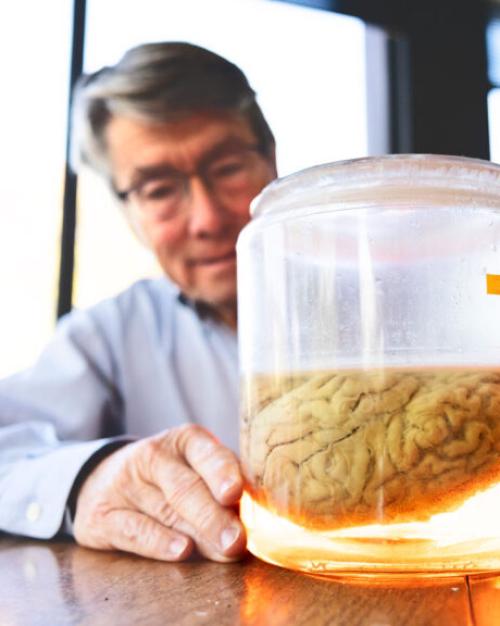Don’t mind them; the eight brains on display in fluid-filled glass jars in Uris Hall have long since stopped being of use to their owners. These preserved organs are part of one of the University’s most famous—if, admittedly, a bit creepy—holdings: the Wilder Brain Collection.
The compilation of cerebra dates back to 1889 and its namesake, Burt Green Wilder, a former Civil War surgeon who was one of Cornell’s original faculty members.
A professor (of anatomy, physiology, comparative neurology, and vertebrate zoology) on the Hill for more than four decades, he studied the workings of the brain and nervous system.
The collection Wilder amassed—his brainchild, you might say—included not only human and animal brains but other organs and body parts; at its peak, it comprised between 600 and 1,200 specimens.
“His observations contributed to working out that the right way to look at brain size is with respect to body size,” notes psychology professor Tim DeVoogd, a neurobiologist and the collection’s current curator. “Whales and elephants have large brains; when you look at the ratio, women on average have slightly larger brains than men with respect to body size.”






